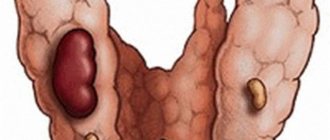Lactation crisis is a common condition that women report when breastfeeding. It is due to the fact that the baby’s need for milk increases. A woman may feel that hot flashes are occurring less frequently and her breasts are no longer full. At the same time, the baby becomes restless and capricious. However, this phenomenon is temporary. Efforts must be made to maintain GV. Often, during the so-called lactation crisis, women transfer their baby to mixed feeding, and this is a direct path to the end of lactation.
Why does a crisis occur?
Lactation crises are a vague concept. Many women know about them and can even name the exact dates. Some mothers prepare for a lactation crisis while breastfeeding. However, breastfeeding consultants and modern pediatricians say that in reality there are no crises.
Lactocrisis is a normal condition in which the baby's need for breast milk increases. The reasons for dissatisfaction may be the following:
- A leap in development. The baby grows and develops. Over time, it requires more nutrition. Just yesterday the baby consumed a certain amount of milk, but today he wants more. Mom’s breasts cannot rebuild instantly; they need several days.
- Reducing feedings. As the baby gets older, the mother begins to gradually reduce feedings. Women try to teach their baby to fall asleep without a breast and teach them to use a pacifier. As a result, the baby's need for milk is reduced and its production decreases.
- Stress. When a woman is stressed and anxious, her adrenaline levels increase. The stress hormone suppresses prolactin and can cause a temporary decrease in milk supply. The more nervous the mother is, the longer this condition lasts.
- Establishment of mature lactation. In the first weeks after childbirth, a woman feels fullness in her breasts. After lactation is established, the mammary glands almost always remain soft, and milk flow occurs during sucking. Many people call this transition in the stages of lactation a crisis.
- Restoration of the menstrual cycle. An increase in the level of sex hormones leads to a decrease in the amount of prolactin. During menstrual bleeding, women sometimes notice that their milk supply decreases.
A lactation crisis lasts no more than 1-7 days if the mother does everything correctly. It is important not to wait for the critical moment, since you can provoke it with your experiences. Many women do not notice any changes in milk production and say that they have not had any crises.
Ten tips on how to survive the Russian financial crisis in 2020
Come up with a plan B
If you open the reserve parachute a few seconds before turning into a cake, it will no longer save you. That's why we need an escape plan. I am a realist and understand that any hired employee could be fired in the near future within a period of 6 months to 1 year. At your current job, check with management to see if you can take on additional work to earn more money. At your current place of work, where your superiors know you very well, your credibility will be higher than that of your boss at a new job. If at your current place of work all available growth points have been exhausted, then get ready for a conversation. When you are asked to write an application, talk to management, perhaps: - You will be able to stay at your current job with a decrease in income - Work remotely with a decrease in the number of responsibilities and wages - Transfer to an alternative position Didn’t work out? The main thing is not to start getting angry, try to defend your rights and accept your dismissal with dignity. This is a market and he decided. Pull your resume from the archive and indicate relevant experience to date. Pay a small fee to have your resume scored by a professional HR agent to increase your chances of getting hired by another company. While you are finishing your job at your old job, start looking for a new one with an updated, high-quality resume. A crisis is an excellent opportunity for career growth in a new field.
Main deadlines
The lactation crisis does not have exact periods and timing. Lactation depends on the organization of breastfeeding and the needs of the child. Traditionally, women mark out the 3rd, 4th and 6th months of the baby. At this age, mothers most often face a lack of milk. At the same time, a lactation crisis can occur at any age of a baby.
In the first month
At 1 month, a close relationship is established between mother and baby, and breastfeeding is established. During this period, newborns behave restlessly due to colic. A characteristic symptom of abdominal pain: the baby begins to suckle at the breast, then suddenly drops, cries and draws in his legs. An inexperienced mother may assume that this behavior is caused by a lack of milk.
At some moments, the baby may “hang” on the chest for a long time. However, this does not mean that he does not eat enough. In this way, babies satisfy the sucking reflex, which helps them calm down.
At two and three months
A lactation crisis at 3 months is often associated with the establishment of mature lactation. If in the first weeks after birth the mammary glands are full, then by 3 months they become soft. A woman may mistakenly assume that her milk supply has decreased. In reality, a lactation crisis at 3 months is rather a far-fetched problem. By this time, milk comes at the baby’s request, and the rest of the time the breast remains calm.
The baby grows and needs more milk over time. A sign of a deficiency is prolonged “hanging” on the chest and restless behavior. This does not mean that the mother has less milk. It’s just that at a certain point the baby begins to demand more. Lactation at 3 months is already mature, so the breast quickly adapts to changes. After just a few days, milk begins to be produced in larger volumes.
At four and five months
The developmental leap occurs at 4 months. During this period, the child shows great interest in what is happening around. The baby feels his body, actively moves his arms and legs. He changes his behavior at the breast: he “hangs”, turns his head, can push away and make a row.
To make the baby less distracted, it is recommended to breastfeed in a calm environment that is familiar to the baby.
At six months
A lactation crisis at 6 months is often associated with the introduction of complementary foods. Gradually, breastfeeding is replaced by regular food. The baby consumes less mother's milk, and it begins to be produced in smaller volumes.
Despite the introduction of complementary foods at 6 months, the basis of the diet is still mother's milk. It is necessary to offer the breast after each complementary feeding. Regular application will prevent a lactation crisis.
In year
The lactation crisis per year is associated with the child’s transition to normal nutrition. At this age, the baby already eats adult food and receives the necessary vitamins and nutrients from it. Breast milk is already becoming more of a delicacy than a vital necessity. With a decrease in the number of attachments and the volume of milk consumed, the breast behaves accordingly.
Lactocrisis occurs every year in women who do not properly organize their approach to breastfeeding.
After 12 months, some children refuse regular food and constantly demand the breast. However, milk can no longer satisfy the baby’s needs, so the baby does not eat enough and “hangs” on the chest for hours, wakes up 10 times at night, and behaves restlessly.
Kudrin warned about the impact of the next stage of the crisis on banks
The head of the Accounts Chamber noted that the Central Bank has already responded to what is happening, refusing to require banks to quickly accrue reserves for the debts of small and medium-sized enterprises and individuals.
Kudrin called the crisis caused by the coronavirus unprecedented Society
“This is an accumulation of risks, but the Central Bank believes that it has enough power to support these banks if something happens,” Kudrin explained. According to him, the provision of payment deferrals and loan restructuring increase risks in the banking system, but these risks are unlikely to be stronger than during the crisis of 2008–2009 or in 2014.
Kudrin also recalled the possibility of using 30 trillion rubles, which are in Russian banks in the accounts and deposits of individuals, as part of the fight against the crisis. According to the head of the Accounts Chamber, part of these funds can be raised by the state as part of borrowing on the domestic market.
“They, of course, don’t just lie there. They are used by banks in the form of loans, which are beneficial to the economy. Now the economy will not consume loans in such volume. Therefore, I think banks will look for more reliable sources of investing money at interest. During a crisis, I think such a maneuver is very justified,” Kudrin noted.
According to him, the economy now needs to “add money” also by easing the monetary and financial policy of the Central Bank and using funds from the National Welfare Fund (NWF).
“To have more liquidity. Therefore, a 7% [GDP] minimum should be a package of support, the National Welfare Fund and borrowing on the market while easing the regulator’s monetary policy. It is necessary to open the National Welfare Fund. Carefully. Approximately balancing with borrowings,” Kudrin is sure.
Kudrin estimated the state support the economy needs at least 7% of GDP Economy
Earlier, the head of the Accounts Chamber said that the economic support measures already announced by the Russian government exceed 5% of GDP, but this is not enough.
Subscribe to the RBC newsletter. We talk about the main events and explain what they mean.
How to deal with the problem?
If a lactation crisis begins, what should a mother do? First of all, you need to contact a specialist. If you don’t have an experienced adviser nearby, then you can’t do without a lactation consultant. In modern maternity hospitals and antenatal clinics there are always such specialists. They will definitely tell you about the nuances of the course of the lactation crisis, and will also help eliminate it in a short time.
In some situations, a woman is prescribed drugs that increase milk production. These can be special protein and taurine mixtures (“Semilak”, “Olympic”), “Milky Way” tea, dietary supplements “Apilactin” and “Lactogon”. You can also purchase products to enhance lactation yourself. The most popular are “Granny’s Basket”, “Semilak” and so on. But it’s worth saying right away that it is impossible to solve the problem with medications alone. We need to figure out why the lactation crisis occurred, eliminate its causes and normalize the process of putting the baby to the breast.
The fourth growth spurt - space exploration
15–19 weeks
Lei
What can the baby do now:
- can not just take a toy and squeeze it with his hands, but also reach out to the object, turn it in his hands, examine it from all sides;
- not just humming, but may say “mom” or “dad” for the first time;
- can begin to crawl, its range of possibilities for understanding the world expands significantly.
Features of behavior
Karapuz understands that some events can happen according to his wishes - this surprises and frightens him. He tries to slide down while in your arms, and while crying he tries to assume the pose of a newborn.
What should parents do?
Keep in mind: before, it was enough for the baby to be carried in your arms; now, in order to distract him, you need to constantly do something with him, come up with new entertainment. Only physical contact becomes insufficient.
Psychologist's advice:
It is important how the child’s environment is organized: it happens that, with all the abundance of toys, he does not have good ones. They are too big, too bright, too loud.
It happens that a child hits himself with a rattle and stops showing interest in it - he gets scared. Toys should be compact, light, and easy to grip. Big and bright children will appreciate it later.
What happens to a baby at 6 months?
At about 26 weeks, something clicks in every baby’s head, and the baby suddenly stops perceiving the world as it seemed yesterday. It turns out that there is a DISTANCE between all the objects around! That is, until now, the child actually thought that the world was a beautiful picture, except that mom and dad were material. And then - bam, the picture comes to life. The box suddenly becomes a real object that you can touch and lick! You also need to somehow reach it, but it’s not clear how long you’ll spend on the road, a minute or a week. So from 23 to 26 weeks the child comprehends such a concept as the distance from one thing to another.
It is not surprising that babies become more restless during this period - you need to touch everything and make sure that it is quite tangible, that you can reach it. Even at 5.5 months, our daughter began to ask more and more to be held in her arms and insistently demand to be brought to flowers, magnets, a towel, her mother’s tchotchkes, a mirror, and so on in a circle several times. Everything had to be touched/gutted/dropped, then the mission was considered completed 
In addition, babies of 5-6 months make a physical breakthrough, which also does not add peace to them. After all, it is during this period that babies learn to crawl ! Can you imagine how difficult this is? I can't crawl myself











